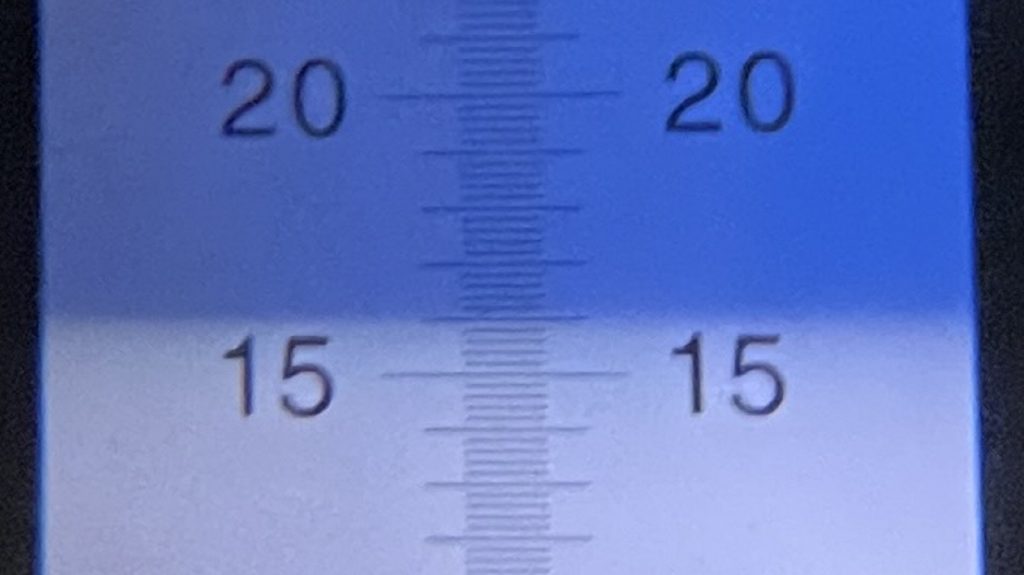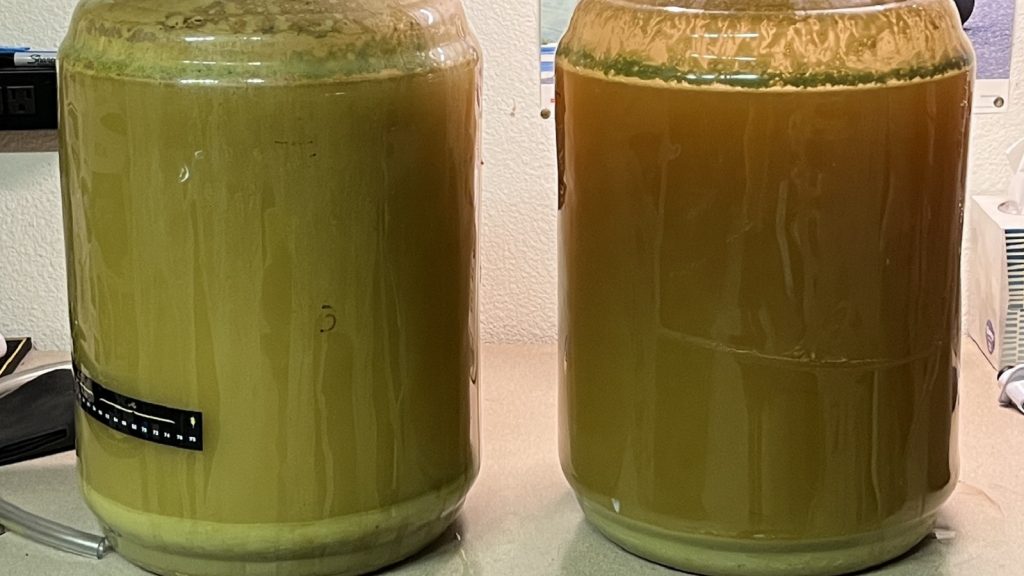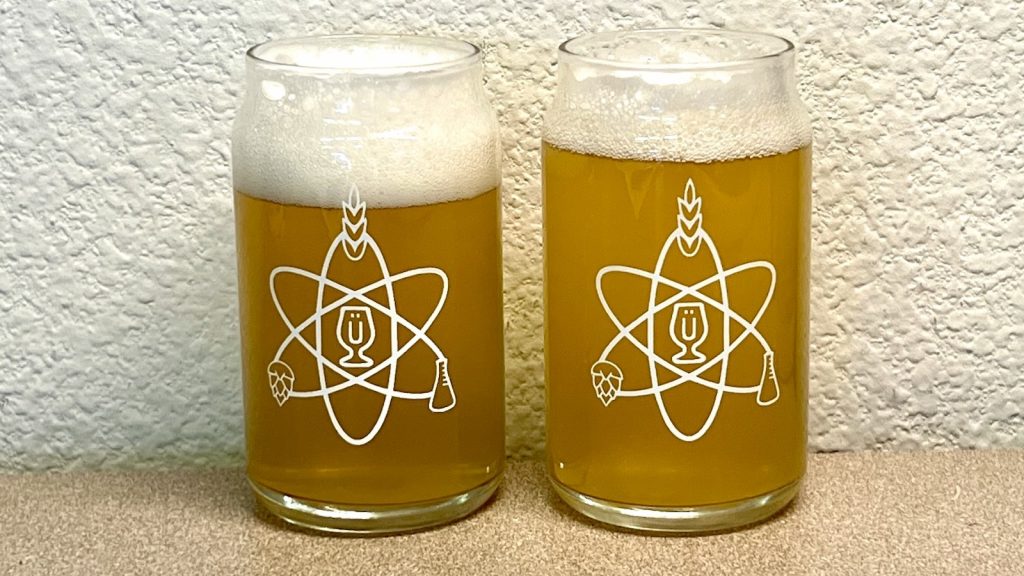Author: Paul Amico
Whether West Coast, Hazy, Red, White, Brown, or Belgian, something all types of IPA have in common is that they’re hoppy, and one way brewers go about achieving this is by dry hopping. Used in the 18th century as a means of staving off contamination of beer shipped overseas in barrels, modern brewers add heaps of hops during fermentation in order to impart pungent fruity, floral, and herbal notes to various styles of beer.
Whereas a common approach to dry hopping involves adding a single dose of hops toward the end of fermentation, some brewers believe splitting the dry hop addition into two doses increases overall hop character. In addition to potential biotransformation that occurs when dry hops are added during active fermentation, the different doses of hops remain in contact with the beer for differing amounts of time, which purportedly affects hop expression as well.
IPA is the style that inspired me to start brewing nearly 2 decades ago, and in the many batches I’ve made since then, I’ve always relied on adding them in a single dose. With so much talk, not to mention marketing, about the benefits of double dry hopping, I began to wonder if I might be missing out on something and designed an xBmt to see for myself.
| PURPOSE |
To evaluate the differences between an American IPA that received a single dry hop dose toward the end of fermentation and one where the dry hops were split into two doses.
| METHODS |
For this xBmt, I went with a simple IPA recipe that relied on the LUPOMAX version of a couple of my favorite hop varieties.
Dealer Shows A Four
Recipe Details
| Batch Size | Boil Time | IBU | SRM | Est. OG | Est. FG | ABV |
|---|---|---|---|---|---|---|
| 5.5 gal | 60 min | 57.3 | 4.7 SRM | 1.065 | 1.009 | 7.35 % |
| Actuals | 1.065 | 1.009 | 7.35 % | |||
Fermentables
| Name | Amount | % |
|---|---|---|
| Lamonta: Pale American Barley Malt | 7 lbs | 50 |
| Pelton: Pilsner-style Barley Malt | 7 lbs | 50 |
Hops
| Name | Amount | Time | Use | Form | Alpha % |
|---|---|---|---|---|---|
| Centennial LUPOMAX | 7 g | 60 min | First Wort | Pellet | 14 |
| Citra LUPOMAX | 7 g | 60 min | First Wort | Pellet | 18 |
| Centennial LUPOMAX | 18 g | 10 min | Boil | Pellet | 14 |
| Citra LUPOMAX | 18 g | 10 min | Boil | Pellet | 18 |
| Centennial LUPOMAX | 30 g | 3 min | Boil | Pellet | 14 |
| Citra LUPOMAX | 30 g | 3 min | Boil | Pellet | 18 |
| Centennial | 56 g | 6 days | Dry Hop | Pellet | 14 |
| Citra LUPOMAX | 56 g | 6 days | Dry Hop | Pellet | 18 |
| Centennial | 56 g | 3 days | Dry Hop | Pellet | 14 |
| Citra LUPOMAX | 56 g | 3 days | Dry Hop | Pellet | 18 |
Yeast
| Name | Lab | Attenuation | Temperature |
|---|---|---|---|
| Flagship (A07) | Imperial Yeast | 77% | 32°F - 32°F |
Notes
| Water Profile: Ca 92 | Mg 1 | Na 10 | SO4 153 | Cl 50 |
Download
| Download this recipe's BeerXML file |
I started my brew day by collecting the full volume of water for a single 10 gallon batch, which I adjusted to my desired profile.
After flipping the switch on my Clawhammer Supply 240v controller to get the water heating up, I weighed out and milled the grain.
With the water properly heated, I incorporated the grains, set the controller to maintain my target temperature of 152°F/67°C, and turned on the pump to recirculate the sweet wort. When the 60 minute mash rest was complete, I removed the grains and let them drip into the kettle while the wort was heating up.
The wort was boiled for 60 minutes with hops added at the times listed in the recipe. When the boil was complete, I quickly chilled the wort with my CFC and transferred identical volumes to sanitized fermenters.
A refractometer reading showed the wort was at my target OG.

The fermenters were placed next to each other in my chamber and left to finish chilling to my desired fermentation temperature of 66°F/19°C, at which point I pitched a single pouch of Imperial Yeast A07 Flagship into each batch.
The beers were left to ferment for 3 days before I returned to add the entire amount of dry hops to one batch (112 g/4 oz each Citra and Centennial) while the other received exactly half the amount of each variety (56 g/2 oz each Citra and Centennial). After another 3 days, I returned to add the second dose of dry hops to the double dry hop batch.
Following another 3 days on the dry hops, I took hydrometer measurements showing the beers were at the same FG.

At this point, I prepared the beers to be packaged and noticed the single dry hop batch was slightly murkier than the double dry hop version.

I proceeded with pressure transferring the beers to CO2 purged kegs.
The filled kegs were placed in my keezer and burst carbonated overnight before I reduced the gas to serving pressure. After a week of conditioning, they were carbonated and ready for evaluation.
| RESULTS |
Thanks to our friends from Crow & Wolf Brewing for allowing us to collect data for this xBmt at their taproom!
A total of 28 people of varying levels of experience participated in this xBmt. Each participant was served 1 sample of the single dry hop beer and 2 samples of the double dry hop beer in different colored opaque cups then asked to identify the unique sample. While 15 tasters (p<0.05) would have had to accurately identify the unique sample in order to reach statistical significance, only 6 did (p=0.93), indicating participants in this xBmt were unable to reliably distinguish an American IPA that received a single dry hop addition from one where the dry hops were split into 2 additions.
My Impressions: Out of the 5 semi-blind triangle tests I attempted, I correctly identified the odd-beer-out just twice, despite admittedly expecting there to be a difference. Ultimately, I had to admit to myself these beers smelled and tasted identical, which was a good thing, as I loved the way they turned out!
| DISCUSSION |
IPA is all about hops, and brewers have come up with a multitude of methods for packing as much hop character in their beer as possible. While dry hopping has been around for eons, originating as a means of beer preservation, a relatively new technique believed by many to further accentuate hop character involves splitting the dry hops into two separate additions. Countering the claims of many, tasters in this xBmt were unable to reliably distinguish an American IPA that received a single dry hop from one that was double dry hopped.
One argument some may make is that double dry hopping usually involves adding double the amount of hops, and that had this occurred in this xBmt, tasters would likely have been able to tell the beers apart. However, the point of this xBmt was to specifically test the impact of splitting the dry hop into 2 additions, which is widely claimed to impact overall hop character. In this case, the later addition of half the dry hops didn’t appear to have much of a perceptible impact. The only real difference I noticed was that the single dry hop beer seemed to be slightly clearer than the double dry hop version, making it appear a touch darker.
I’ve been brewing IPA for nearly 2 decades and have always relied on a single dry hop addition, which has worked out really well for me. As a lover of all things hoppy, I was open to the idea that double dry hopping might have a positive impact on overall hop character, but the fact these results corroborate those from a couple past xBmts leaves me questioning the usefulness of this method. Given my focus on reducing oxygen exposure as much as possible, I’ll be sticking to single dry hop additions in my brewing, as adding that second addition only seems to increase the risk of oxygen exposure.
If you have any thoughts about this xBmt, please do not hesitate to share in the comments section below!
Support Brülosophy In Style!
All designs are available in various colors and sizes on Amazon!
Follow Brülosophy on:
FACEBOOK | TWITTER | INSTAGRAM
If you enjoy this stuff and feel compelled to support Brulosophy.com, please check out the Support page for details on how you can very easily do so. Thanks!






















11 thoughts on “exBEERiment | Impact Double Dry Hopping Has On An American IPA”
I have an Italian Pilsner recipe, which has the first dry hop during primary as expected, but the second dry hop is in the keg as the beer conditions for 3 weeks before I closed transfer into a bright tank keg.
This is the only form of DDH I think is worth the effort, with the impact being prominent, it was easy to AB test this; albeit I don’t have statistical evidence of it…
Very nicely done! I’ve played around a bit myself on double dry hopping my East Coast IPAs and it didn’t seem to make a difference. Good to get more objective confirmation though.
“…splitting the dry hop into 2 additions…is widely claimed to impact overall hop character.” How did this become “widely claimed” in the first place? It seems self-evident that if one adds 8oz hops in one addition or instead as two 4oz additions, one is still adding a total of 8oz of hops. You are simply reaching maximum oil dissolution later with the double addition. If the logic behind this myth involves biotransformation, I have yet to read or taste any evidence that biotransformation is, on a practical level, anything other than expectation bias.
sum of parts does not always equal the total. The reality is that often the unexpected happens, especially in large amounts or with certain geometry. An easy example is my french press coffee. Sometimes, some of the grounds quickly sink to the bottom and get compacted. Flavor extraction in that case is not equal to a sum of smaller parts. You are making really strong statements about processes, which can lead to implementation issues. Be more open
Whilst my experience is that DDHing is more marketing gimic than reality, if you wanted to test for a difference you should have charged your first dry hop charge earlier. I suspect that your primary fermentation was complete by 3 days so it was not ‘active” when the first charge was added. Having read and discussed dry hopping with a number of my brewing colleagues we conclude that the only possible difference would be biotransformation which requires the right hop to be added early enough to allow this. Potentially then you would get a greater breadth of flavour.
published experiments a couple years ago in Oregon at one of the universities showed dry hopping over about 1.1 oz./gal is a waste of hops. Your dry hopping rate is almost double the recommendation. that would be a good followup experiment, to check the Oregon data.
read the study and then you’ll understand its limitations.
I think Brulosophy did do this a while ago and showed a difference, which isn’t a surprise….the Oregon article keeps getting brought up but I think there is often an over-simplification of the results here. There needs to be a bit of context:
Aside from only testing one hop at one temperature on a smallish scale setup (it is known that dry hop utilization/rate is specific to the volume with smaller volumes seeing quicker extraction) the outcome was not that more than 8g/l makes no difference, but rather less fruity characteristics start to become extracted at increasing rates (categorised as vegetal and tea-like flavours). The beers will certainly be different and the taste results of this study found this to be so. Personally I’ve found big differences in flavour and aroma in beers with more than 8g/l dry hop. Some were definitely worse for it and some were better, but to say they are a waste really depends on what flavour profile your after (and each to their own). Over extraction of one hop might work out nicely, whereas another may create a grassy acrid mess (something I’ve also noticed myself). Not everyone craves the 5-10 ‘defined’ fruit descriptors on a spider plot and the best beer isn’t a beer that scores highest on these graph points either.
Related to this, what makes DDH possibly relevant has to do with the volumes and shape of FV vessels with larger vessels suffering from reduced extraction from large single dry hopping schedules. This is due to hops settling and reducing SA to drive extraction. Re-circulating, bubbling gas are options to improve extraction as are splitting dry hops. Whether or not this translates to a noticeable difference to the consumer is one thing, but it’s more likely at the homebrew level maximum potential extraction is reached regardless of the method due to the volumes utilised.
Following up on Antonio wrote, and bringing some citations into the mix:
When Brulosophy tested for a difference between beers with 1.34 oz/gal vs 2 oz/gal, the results came back insignificant (p=0.10, so interpret that as you wish): https://brulosophy.com/2019/06/24/investigating-the-dry-hop-saturation-point-exbeeriment-results/
The Shellhammer paper on dry hop saturation was the subject of the first Bru Lab podcast: https://brulosophy.com/podcasts/the-bru-lab/
The paper itself can be found here: https://onlinelibrary.wiley.com/doi/full/10.1002/jib.517
Agree whole-heartedly with Antonio that the results of the paper get over-simplified, and I would even say misrepresented. The paper did not find that hops beyond 8 g/l failed to perceptibly change the beer, but rather that the change was less pronounced than the change at lower amounts. Or, to use a quote directly from their conclusion, “Using dry-hopping rates >800 g/hL leads to diminishing returns in terms of increasing hop aroma and is an inefficient use of raw material.”
I completely agree with @Joe
I incorrectly thought the Brulosophy experiment showed as difference but I must have been thinking of https://brulosophy.com/2015/09/21/dry-hop-quantity-a-little-vs-a-lot-exbeeriment-results/ which tested much lower amounts vs threshold.
It figures less is more and chucking more at a beer isn’t going to get you more of what you want, even when you just apply rules of chemistry, saturation, equilibrium etc. From experience hop aroma suffers more ‘wastage’ in Shellhammer terms in comparison to changes in flavour.
On the Shellhammer paper chemical analysis showed that tea and green like chemicals increase linearly in some cases (and in the case of β-caryophyllene more than 5x by just doubling the rate) . The problem with the whole analysis is that Cascade has been broken down into ‘Citrus’ or ‘herbal/tea’ with nothing in between. So if it ain’t citrus (i.e. pine, dank etc) it’s automatically put in the other category which is inferred by the conclusion as an undesirable trait, an over simplification in itself. If you want an efficient pure unadulterated ‘citrus’ aroma then stick a citrus fruit in it, any hop addition is probably inefficient in terms of cost.
^ Something born out on the Shellhammer paper by the Citrus sensory comparison with the commercial beer Grapefruit Sculpin which scored higher than any of the test beers for citrus and at the same time scoring lowest for herbal/tea